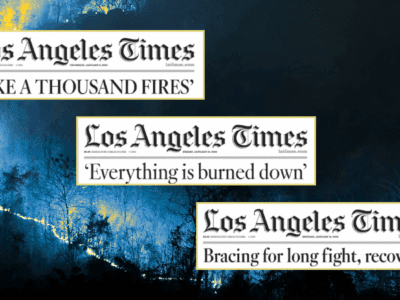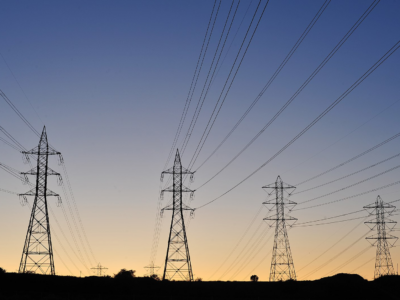EPA Grants California’s Waivers for Clean Cars and Clean Trucks
By finally granting the Advanced Clean Car II waiver, the agency just undercut Trump’s planned attack on electric vehicles.
EPA just made the incoming Trump Administration’s efforts to stop the move toward clean, zero emission vehicles a whole lot tougher. And ironically, the U.S. Supreme Court’s controversial decision overturning deference to agency actions, Loper Bright v Raimondo, may help California in any litigation over the legitimacy of the waiver request.
EPA finally granted California a waiver (which is essentially a permission slip) almost a year after the state submitted the request implement a major program to cut emissions from the transportation sector, the Advanced Clean Car II rule. ACC II would phase out emissions altogether from cars and light trucks by 2035. EPA also granted another waiver for something called the Omnibus Low NOx rule, submitted more than two years ago, which would require trucks to cut NOx pollution by 90 percent below current levels.
Notably, in granting the Advanced Clean Car waiver, EPA relied heavily on the fact that the program cuts traditional air pollutants, including those that cause ozone pollution, from vehicles. The fact that the standards also cut greenhouse gases is a secondary consideration. That makes the legal basis for the waiver very strong and will make it much tougher for the Trump Administration first to withdraw them and then to defend those withdrawals in court.
In granting the waiver, EPA made clear that the California program will cut the air pollutants that cause smog dramatically. By doing so, EPA gave California permission to do what the state has done so effectively for almost 60 years: make cars and trucks cleaner in order to clean up the state’s air. As the waiver decision for the ACC II rule states:
California continues to experience compelling and extraordinary circumstances to need a separate motor vehicle emissions program. These include geographical conditions (like thermal inversions) that, when combined with large numbers and high concentrations of automobiles, create serious air pollution problems. For example, as stated in [California’s] waiver request and additional written comment, California and particularly the South Coast and San Joaquin Valley Air Basins continue to experience some of the worst air quality in the nation and continue to be in nonattainment with several [air pollution standards]. In the context of these serious and long-lasting pollution challenges, California has demonstrated that every reduction in ozone precursor and particulate emissions is critical.
California’s power under the federal Clean Air Act to cut pollutants from cars and trucks is unquestionable and longstanding. The state can issue its own pollution standards with a waiver from EPA, as long as they are at least as strong as federal standards and as long as the state has “compelling and extraordinary circumstances” for doing so. As EPA found, the compelling and extraordinary circumstances are these: California needs extremely stringent standards for cars and light trucks in order for the state – and especially for Southern California — to meet federal standards for air pollution. If the Trump Administration tries to revoke today’s waiver, it will be doing so by ignoring the plain language of the Clean Air Act and will be telling California that the state can’t comply with standards the federal government itself sets. That will give California a much stronger legal leg to stand on than if the waiver was granted simply to cut greenhouse gases and address climate change. And because a number of other states follow the California standards as federal law authorizes, a large portion of the country will follow these important programs.
Here’s some important background. It is no secret that Southern California has long had the worst ozone problem in the country (though as I have argued elsewhere and have a forthcoming book about, our air is stunningly cleaner than it used to be). Southern California is called an “extreme nonattainment” area for ozone. The extreme says it all: we are far out of attainment with the standards. Even worse, Southern California just missed a deadline to come into attainment with the 1997 ozone standard – that’s even though EPA has since tightened the standard two more times, in 2008 and 2015.
So Southern California can’t meet the 1997 ozone standard, let alone the two more stringent ones now in effect. And the reason it can’t meet the standards? Because emissions from cars, trucks, trains, planes and ships are creating most of the pollution. In fact, EPA recently rejected part of Southern California’s plan to comply with the 1997 standard because the district says it can’t do so unless those transportation emissions are cut dramatically. And that’s exactly what the Advanced Clean Car II rule would do for cars and light trucks.
Without the ACC II rule, Southern California will be that much further out of compliance with federal law. And if it’s out of compliance, the federal government is supposed to sanction the state by withholding billions of dollars in federal highway funds. Southern California would also have to impose even tighter requirements on what are called “stationary sources” like power plants even though doing so still won’t get Southern California into compliance with federal law. That’s because even if we stopped all pollution from these stationary sources we still wouldn’t meet the ozone standard. Transportation emissions are simply too big to ignore.
If Trump’s EPA tries to revoke the newly granted waiver (as it undoubtedly will do), what will the basis be for doing so? That California doesn’t need to cut transportation emissions even though it can’t meet federal air pollution standards without doing so? That its circumstances aren’t “compelling and extraordinary” even though it can’t meet the 1997 standards, let alone 2008 and 2015? And even though EPA has granted California every waiver it has sought – listed here — to fight air pollution since the state first won the right to set its own standards way back in the 1960s?
In fact, in defending its program and EPA’s waiver (or, alternatively, suing to invalidate any attempt by the Trump Administration to revoke the waiver), California will likely rely heavily on this term’s Loper Bright v. Raimondo. That’s the Supreme Court decision that overturned Chevron v. NRDC, the case that deferred to agency interpretations of statues that are ambiguous. Instead, courts are to determine what an ambiguous statutory provision means. So how does this change in the standard of review help California?
In the waiver case, courts will be asked to decide what “compelling and extraordinary” means and whether EPA got it right in granting the waiver (or wrong if the Trump Administration withdraws the waiver). For almost sixty years, EPA has interpreted compelling and extraordinary to mean that California needs its own emission standards to attack its particularly problematic air pollution problems, especially those caused by cars and trucks. In the subsequent decades, EPA has granted California waivers to tackle its air pollution.
The Loper Bright Court said that when a court determines what ambiguous statutory language means, it should look to how an agency interpreted the language soon after the provision was adopted. Courts should also look to whether the agency’s view has been consistent over time. In grounding the waiver decisions in California’s need to tackle air pollution, EPA is interpreting the language in the same way it did right after the Clean Air Act passed (the first waiver was granted in 1969) and in the way the agency has done in the almost sixty years since. The only time EPA has denied waivers are when the Bush Administration and then the first Trump Administration denied California’s waiver requests for cutting greenhouse gases from cars and trucks. The agency has always allowed California to cut emissions to tackle air pollution. Today’s waiver decisions confirm that long history. In doing so, the agency has made the Trump Administration’s plans to undercut the transition to a clean vehicle fleet much more difficult.







Reader Comments